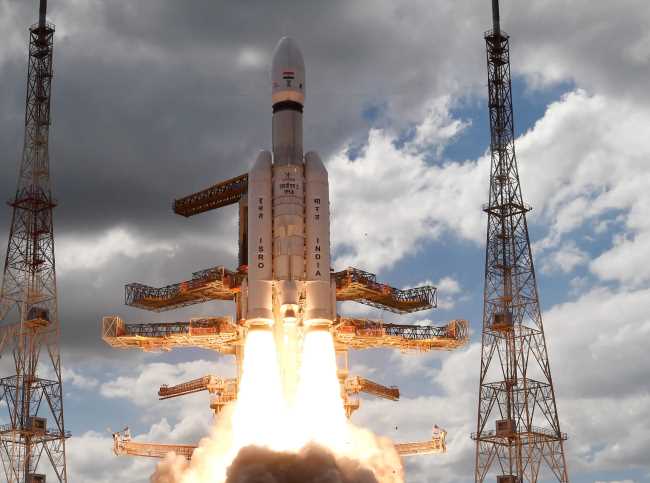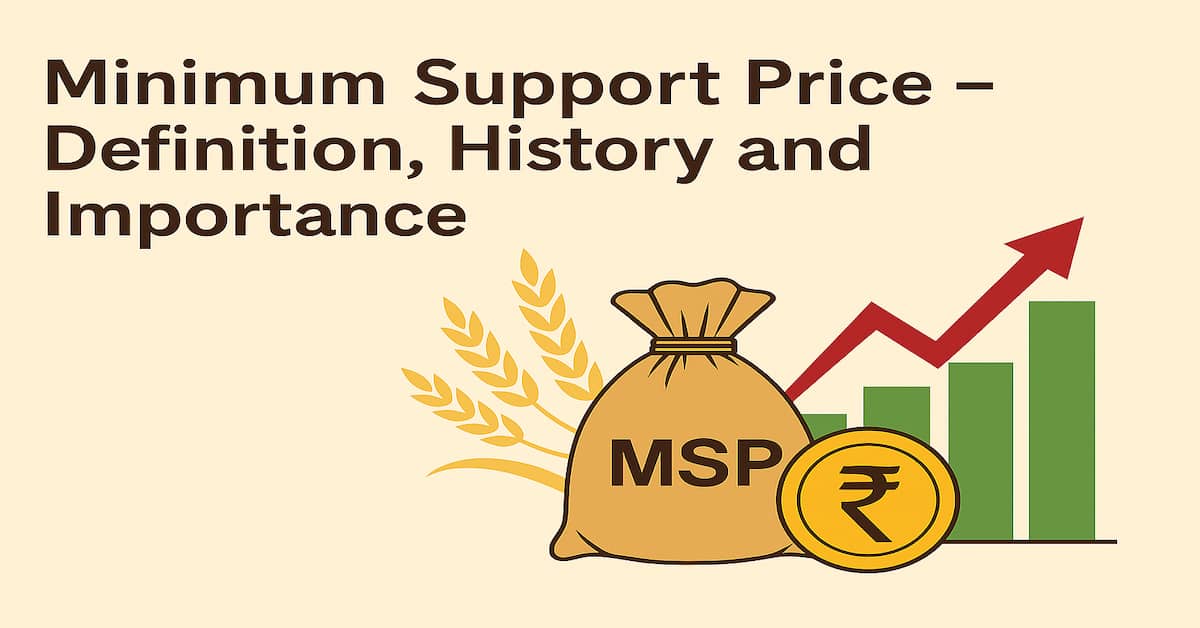Chandrayaan-3 Mission : Indian Space Research Organization (ISRO) launched its Chandrayaan-3 Mission on 14 July 2023.
Through this Chandrayaan-3 mission, India was again trying to land its lander on the lunar surface and it got success on August 23, 2023 at 6.04 pm when Chandrayaan touched the lunar surface. Ever since the Chandrayaan-3 mission was launched, it was progressing steadily and it was being speculated that if all went well, it would land on the lunar surface on August 23 or 24 and this happened and Chandrayaan-3 Mission achieved success.
Table of Contents
- 1. Chandrayaan-3 Mission: Important Points
- 2. What is Chandrayaan Mission?
- 3. Successful landing of Chandrayaan-3 on the surface of the Moon
- 4. Chandrayaan-3 Mission spacecraft module
- 5. Objectives of Chandrayaan-3 Mission
- 6. Lander and Rover of Chandrayaan-3 Mission
- 7. Countries that have successfully landed on the moon
- 8. FAQs related to Chandrayaan-3 Mission
- 9. Important MCQs for Competitive Exams
As you would know that ISRO launched its Chandrayaan-2 mission in 2019. But due to some technical reasons that mission failed in its last phase and we got only partial success.
Despite the failure of the Chandrayaan-2 mission, Indian scientists did not give up and once again sent their Chandrayaan-3 mission towards the moon. Our Indian scientists were trying their best to go to the moon and hoist the tricolor there and were successful in it.
On August 23, the waiting clock ended and Chandrayaan-3 made a soft landing on the lunar surface. This day is a historic day for ISRO and our country and will always be remembered. This is another achievement for India in space research.
Chandrayaan-3 made a successful landing on the South Pole of the Moon and India has become the first country in the world to do so. Along with this, it has also become the fourth country in the world to successfully land its vehicle on the surface of the Moon. The other three countries that have landed their vehicles on the surface of the Moon before India are – America, Russia and China.
In this article, some important information related to Chandrayaan-3 Mission has been given, which is very important from the examination point of view. If you are also preparing for any competitive exam, then this article is beneficial for you, definitely read it completely.
Along with this, we have also given answers of some important questions related to Chandrayaan-3 Mission in this article which can be asked in the upcoming examinations.
Chandrayaan-3 Mission: Important Points
Some important points related to Chandrayaan-3 Mission are given here in the form of a table. These are important for one-day exams. Remember them.

| Mission name | Chandrayaan-3 Mission |
| Launching date and time | Jul 14, 2023 at 2:35 pm |
| Launched from | Satish Dhawan Space Center |
| Location of Satish Dhawan Space Center | Sriharikota, Tirupati district (Andhra Pradesh) |
| Who launched | ISRO |
| Full form of ISRO | Indian Space Research Organisation |
| Current Chairman of ISRO | Shri S. Somnath |
| Name of the rocket carrying Chandrayaan-3 | LVM3 (Launch Vehicle Mark-3) |
| Chandrayaan-3 lander name | Vikram |
| Chandrayaan-3 rover name | Pragyan |
| Cost of Chandrayaan-3 Mission | Rs. 615 crore |
| India is which country to soft-land on the moon | Fourth country (other three countries – America, Russia and China) |
| Chandrayaan-3 mission theme | Science Of The Moon |
| Total weight of Chandrayaan-3 | 3900 kg |
| Previously two Chandrayaan missions | Chandrayaan-1 – 2008; Chandrayaan-2 – 2019 |
What is Chandrayaan Mission?
Chandrayaan Mission is an ambitious space project of India through which some important information about the moon is to be obtained. The mission began when India launched its first Chandrayaan-1 in 2008. After that Chandrayaan-2 was launched in 2019, but it got only partial success.
Chandrayaan-3 has now been launched under this Chandrayaan mission. It was launched on 14 July 2023 at 2.35 pm from Satish Dhawan Space Center, Sriharikota.
In this way, the next phase of Chandrayaan-2 is Chandrayaan-3 mission.
Successful landing of Chandrayaan-3 on the surface of the Moon
Under the Chandrayaan-3 mission, the lander was estimated to land on the lunar surface on August 23 or 24. And it proved to be true when Chandrayaan made a successful landing on the lunar surface on 23 August.
Although it does not take so many days to go to the moon, but we are not yet able to send Chandrayaan directly to the moon. That’s why Chandrayaan-3 first orbited the Earth in five orbits and then launched it into the Moon’s orbit.
After that, it circled in the orbits of the Moon for a few days and finally it landed on the surface of the Moon. That is why it took a total of 40 days for the Chandrayaan-3 mission to reach the moon.
The distance of the Moon from the Earth is 3,84,400 km and if Chandrayaan-3 was tried to be sent directly to the surface of the Moon, all its fuel would have been spent on the way. If more fuel is kept, then the weight of the rocket will become very high, for which a very powerful engine will be needed. LVM-3 is only 142 feet long which can’t hold a lot of fuel.
That’s why it is released to orbit the Earth and orbit-raising is also done. When Chandrayaan reaches the fifth orbit of the Earth, it is thrown into the Moon’s orbit with the help of Earth’s motion and gravity.
Then the same process happens in the orbits of the Moon and finally the vehicle lands on the surface of the Moon. That’s why it took 40 days for Chandrayaan-3 Mission to successfully land on the lunar surface.
Chandrayaan-3 Mission spacecraft module
The spacecraft going for the Chandrayaan-3 mission has two modules – the first propulsion module and the second lander-rover module.
The main function of the Propulsion Module is to take the Lander-Rover Module to the Moon. After reaching close to the Moon, the Lander-Rover Module will separate itself from the Propulsion Module and start falling towards the Moon’s surface.
But the lander has four engines that will push it upwards and slow down its descent. Scientists say that just before touching the surface of the moon, its traveling speed will be 2 meters per second. With this, it will descend gently on the moon and will be able to do a soft-landing.
Objectives of Chandrayaan-3 Mission
The objective of the Chandrayaan-3 mission is to collect as much information as possible about the surface of the Moon. For this, four types of scientific payloads have been installed on the lander of Chandrayaan-3, which are as follows –
| Sl. No | lander payload | Objective |
| 1. | Langmuir probe (LP) | Measuring the density of plasma (ions and electrons) near the lunar surface and its changes over time |
| 2. | Chandra’s Surface Thermo physical Experiment (ChaSTE) | Measuring the thermal properties of the Moon’s surface near the polar regions |
| 3. | Instrument for Lunar Seismic Activity (ILSA) | To measure seismicity around the landing site and image the composition of the Moon’s crust and mantle. |
| 4. | LASER Retroreflector Array (LRA) | Its job is to understand the dynamics of the lunar system |
Similarly, there are two scientific payloads in the rover which are as follows –
| Sl. No | rover payload | Objective |
| 1. | LASER Induced Breakdown Spectroscope (LIBS) | To obtain chemical composition and estimate mineralogical composition for qualitative and quantitative elemental analysis and to advance our understanding of the lunar surface. |
| 2. | Alpha Particle X-ray Spectrometer (APXS) | Obtaining information about the elemental composition (Mg, Al, Si, K, Ca, Ti, Fe) of the soil and rocks surrounding the lunar landing site |
Lander and Rover of Chandrayaan-3 Mission
In the Chandrayaan-3 mission, a lander and a rover have been sent along with the vehicle. A lander and a rover also went in Chandrayaan-2. The name of the lander sent with Chandrayaan-3 is ‘ Vikram ‘ and the name of the rover is ‘ Pragyan ‘.
Rover Pragyan ejected about two and a half hours after the lander soft-landed at the designated lunar site. Now it will start chemical analysis during its mobility on the lunar surface. Many scientific instruments have been installed in the lander and rover to perform experiments on the lunar surface.
The total weight of the lander module including the rover is 1752 kg.
Difference between Lander and Rover – Lander is used for soft landing of spacecraft or rover. For this, the lander is equipped with advanced technology. It is fitted with an altimeter to measure altitude, a velometer to measure velocity and cameras for threat detection and avoidance. After landing on the surface of the moon, it cannot move around and remains standing in one place on its feet.

A rover is sent along with the lander, which can move freely on the lunar surface after leaving the lander and can do scientific analysis. It has wheels which help the rover to move.

Both the lander and the rover carry a number of instruments for scientific experiments. With the help of these instruments, they can analyze the lunar soil, examine how the lunar surface conducts heat and how earthquake waves pass through the lunar surface, etc.
Countries that have successfully landed on the moon
There are only three countries in the world that have successfully landed on the moon so far – America, Russia and China. After the successful landing of Chandrayaan-3, India has become the fourth country to do so.
But the most important thing is that India has landed its Chandrayaan on the south pole of the moon, where till date no country has made any kind of vehicle landing. In this way, India has become the first country in the world to land a vehicle on the South Pole.
FAQs related to Chandrayaan-3 Mission
When was Chandrayaan-3 Mission launched?
Answer – 14 July 2023
What is the primary objective of Chandrayaan 3?
The objective of the Chandrayaan-3 mission is to collect as much information as possible about the surface of the Moon, such as studying the atmosphere and temperature of the Moon, searching for signs of water on the surface of the Moon, etc.
How many modules were there in the spacecraft going for Chandrayaan-3 Mission?
There were two modules – the first propulsion module and the second lander-rover module.
Which instrument is used to measure the density of plasma (ions and electrons) near the surface of the Moon and its changes with time?
Langmuir probe (LP)
What is the total cost of Chandrayaan-3 mission?
Rs. 615 crore
Important MCQs for Competitive Exams
- What is the name of the lander of Chandrayaan 3?
a. Pragyan
b. Vikram
c. season
d. Dhruv
Answer – b. Vikram - What is the main objective of Chandrayaan-3 mission?
a) landing on the moon
b) orbiting the moon
c) conducting scientific experiments on the moon
d) launching a rover on the moon
Answer: c) conducting scientific experiments on the moon - In which region of the Moon did Chandrayaan-3 land?
a) Near North Pole
b) Near Equator
c) Near South Pole
d) None of these
Answer: c) Near South Pole - What is the name of the rover accompanying Chandrayaan-3?
a. Pragyan
b. Vikram
c. season
d. Dhruv
Answer- a. wisdom - When was the Chandrayaan-3 mission launched?
a) July 2023
b) August 2023
c) September 2023
d) October 2023
Answer: b) August 2023 - What is the total cost of Chandrayaan-3 mission?
a) Rs 500 crore
b) Rs 615 crore
c) Rs 700 crore
d) Rs 800 crore
Answer: b) Rs 615 crore - Who is the Project Director of Chandrayaan-3 mission?
a) K. Sivan
b) M. Annadurai
c) P. Veeramuthuvel
d) S. Somnath
Answer: c) P Veeramuthuvel - Which country became the first country to soft-land on the moon?
a) third
b) fourth
c) fifth
d) sixth
Answer: b) fourth - When was Chandrayaan-3 launched?
a) 14th July 2023
b) 15th July 2023
c) 16th July 2023
d) 17th July 2023
Answer : a) 14th July 2023 - From where was Chandrayaan-3 launched?
a) Sriharikota
b) Bangalore
c) Thiruvananthapuram
d) Hyderabad
Answer: a) Sriharikota - What is the name of the rocket carrying Chandrayaan-3?
a) GSLV Mk IV
b) PSLV-C49
c) LVM3 (Launch Vehicle Mark-3)
d) ISRO Falcon
Answer: c) LVM3 (Launch Vehicle Mark-3) - Which country is not among the countries that reached the moon?
a) America
b) India
c) Japan
d) Russia
Answer: c) Japan - When was Chandrayaan-1 launched?
a) 2007
b) 2008
c) 2009
d) 2010
Answer: b) 2008 - Who is the current chairman of ISRO?
a) K. Sivan
b) S Somnath
c) M. Annadurai
d) P Veeramuthuvel
Answer : b) S Somnath



